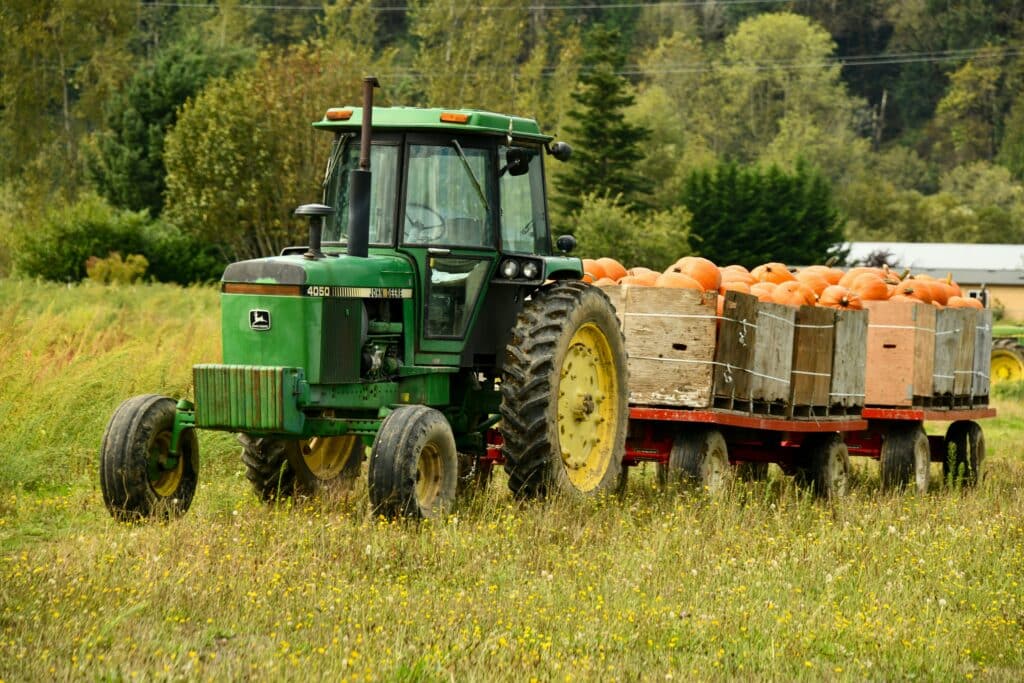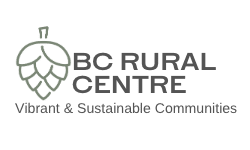
Supporting Rural and Remote Economies: What Canada Must Do Now
Rural, remote, and northern regions are important and should be supported, not just because of their economic contributions (they contribute to over a quarter of Canada’s GDP) but because people in all parts of Canada should have similar levels of well-being. This is fundamental to our nation’s territorial cohesion. Accordingly, there is a lot of work to be done to not just improve support for rural firms and strengthen innovation, but to invest in rural and remote places and to listen to their ambitions. Doing so takes an understanding of rural and remote economies and a commitment to transforming what have too often been exploitative relationships between the “core” and “periphery” — that is, urban and rural or remote Canada.
Understanding Rural and Remote Economies

When it comes to thinking about rural and remote economies, geography and connectivity are paramount. Urban economies benefit from agglomeration dynamics — the clustering of economic activities and shared knowledge, innovations, and human resources combine to create positive spillover effects. Urban residents tend to have higher access to services, thicker and more diversified labour markets, and lower infrastructure and transportation costs. Meanwhile, rural economies tend to have the opposite conditions, making it much harder to operate and sustain successful businesses. Rural areas close to cities can benefit from agglomeration dynamics and borrow their effects, but more remote communities face vastly different conditions and basic infrastructure, such as high-speed digital connectivity, may not be in place.
“Rural economies are also very often Indigenous economies given that Indigenous Peoples are more likely to live in predominantly rural regions.”
Rural economies have long been associated with “staples” — the provision of raw materials in the form of minerals, lumber, energy, and food. These are indeed vital contributions and remain a major feature of many rural and especially remote economies today. However, rural economies can also include centres of manufacturing, innovation, services, creative industries, etc. Rural economies are also very often Indigenous economies given that Indigenous Peoples are more likely to live in predominantly rural regions (60% live there — 33% more than the non-Indigenous population). Data from the National Aboriginal Business Survey, which is conducted by the Canadian Council for Aboriginal Business, show that Indigenous businesses are growing, they demonstrate innovation and, while generally small, they have a higher propensity to export.
Governments play a key role in supporting and strengthening rural and northern economies. From the governance of natural resources to investments in critical infrastructure, these interventions set conditions for investment and business growth. Together with a research team, we have reviewed all published provincial and territorial strategies, plans, and programs across Canada in order to understand how they include (or exclude) rural communities.
Positively, our analysis demonstrates that governments are thinking about rural economic development — this is the most common set of policy interventions associated with rural Canada, followed by natural resources (30% and 22% out of the total respectively). We also looked at the extent to which such interventions targeted rural areas and specifically considered rural/remote community priorities. Around one-third of broad economic development strategies, plans, and programs had high rural content in contrast to one-fifth of those in natural resources and agriculture. Rural economic development is certainly on the government agenda, but the results are uneven. In many cases, the ways in which rural economies are considered and included by policymakers remain piecemeal and dated.
Challenges and Opportunities for Rural and Remote Economies

The challenges facing rural and especially remote economies are many. Communities that are more remote tend to have higher economic disparity, indicating that, on average, rural communities have been declining or at least growing more slowly than urban communities. Economies dominated by export commodities are vulnerable to market fluctuations. As we’ve seen time and again, the closure of an industry or mill can devastate rural communities, and Canadian governments have not always managed these processes well. Research has shown that many rural businesses have a harder time accessing finance and other business services, and that there remains a digital divide, with rural gaps in access to high-quality broadband, particularly in Indigenous communities. Climate change presents more than a challenge — it is a crisis, as rural and remote regions are at the forefront of climate change and have far fewer resources to deal with it.
“Research has shown that many rural businesses have a harder time accessing finance and other business services, and that there remains a digital divide.”
At the same time, opportunities abound. Canada has the potential to be a leader in renewable energy production and a key supplier of the critical minerals that will help facilitate strategic objectives both here and abroad. There are opportunities to develop innovative and climate-resilient agricultural practices and new innovations in net zero steel production. But whenever one thinks of these opportunities, one must also consider who they benefit and what their legacies will be. We must not replicate the injustices of the past.
Canada has made a commitment to implementing the United Nations Declaration on the Rights of Indigenous Peoples for which Free and Prior Informed Consent is paramount. Its implementation in the context of rural and remote economic development has too often failed. The benefits of economic opportunities in rural and remote regions should deliver well-being and resilience to the people and communities where it takes place, particularly to Indigenous rights holders. We can, and must, do better.
Supporting and Strengthening Rural and Remote Economies
Canada is a big and diverse country. There are many different rural and remote economies and as such, place-based policies are critical. At the same time, there are some overarching practices that can support and strengthen rural and northern economies. Below, we highlight three key opportunities.
1. Creating “scale” among smaller places
Rural and especially remote places are inherently small, but that doesn’t mean they need to be unconnected and isolated in their efforts to deliver services important for business and community members alike. Nor does it mean they all need to fully amalgamate, a process that does not always live up to its promise. More can be done to create scale by strengthening rural-to-rural and rural-to-urban partnerships in all manner of areas from business services to infrastructure. Evidence from the Organisation for Economic Cooperation and Development demonstrates how such partnerships can support economic development. Governments have a role to play in encouraging such relationships through their funding programs.
“More can be done to create scale by strengthening rural-to-rural and rural-to-urban partnerships in all manner of areas from business services to infrastructure.”
Creating scale can also relate to how communities or rightsholders pool knowledge and coordinate in order to ensure that their interests are being met. One example of such a capacity-building initiative is the Canadian Centre of Excellence for Indigenous Mineral Development – a hub that provides information, tools, and guidance for Indigenous Peoples’ interests in the mining industry. Initiatives like this can help to reduce inherent power asymmetries.
2. Integrated and long-term planning approaches
Our analysis of rural policies in Canada has highlighted leading practices from the territories. Plans, programs, and strategies in the Yukon, Northwest Territories, and Nunavut direct attention and resources to high-quality rural priorities integrated across virtually all subject areas. For example, Nunavut’s Parnautit: A foundation for the future – Mineral Exploration and Mining Strategy integrates rural and remote priorities into strategic economic activities. This document focuses on building partnerships in local communities and prioritizes long-term socio-economic monitoring for communities impacted by mining activity. An entire pillar is dedicated to community benefits and another to jurisdictional certainty. The social and economic activities associated with the impacts of natural resource development are considered proactively and collectively at the community level. Other parts of Canada can learn from this type of integrated and long-term planning approach to place-based and rural policy.
3. Supporting Indigenous economies
Indigenous economies and development ambitions are often absent from government economic development strategies and considerations. Indigenous entrepreneurship, particularly in rural areas, has some unique characteristics such as common rights to land and resources and specific regulatory and taxation arrangements, and as such, can require specific supports. There are a growing number of initiatives to support Indigenous businesses in Canada, including a pan-Canadian network of Indigenous Financial Institutions that provide developmental lending, business financing, and support services. The expansion of these vital services is important. But beyond this, there is a need for governments and corporate Canada to better understand and include Indigenous economies more generally and to uphold the United Nations Declaration on the Rights of Indigenous Peoples. The 2022 National Indigenous Economic Strategy for Canada — developed by over 20 Indigenous organizations —outlines 31 calls to economic prosperity that are important in this regard.
“Indigenous economies and development ambitions are often absent from government economic development strategies and considerations.”
Given the pressures and opportunities facing rural and remote Canada, it is critical that people and communities are at the centre of economic development efforts, and that means strengthening their capacities, resilience, and ultimately, well-being. This will require more than piecemeal attention to rural Canada, and an integration of place into all policies.
